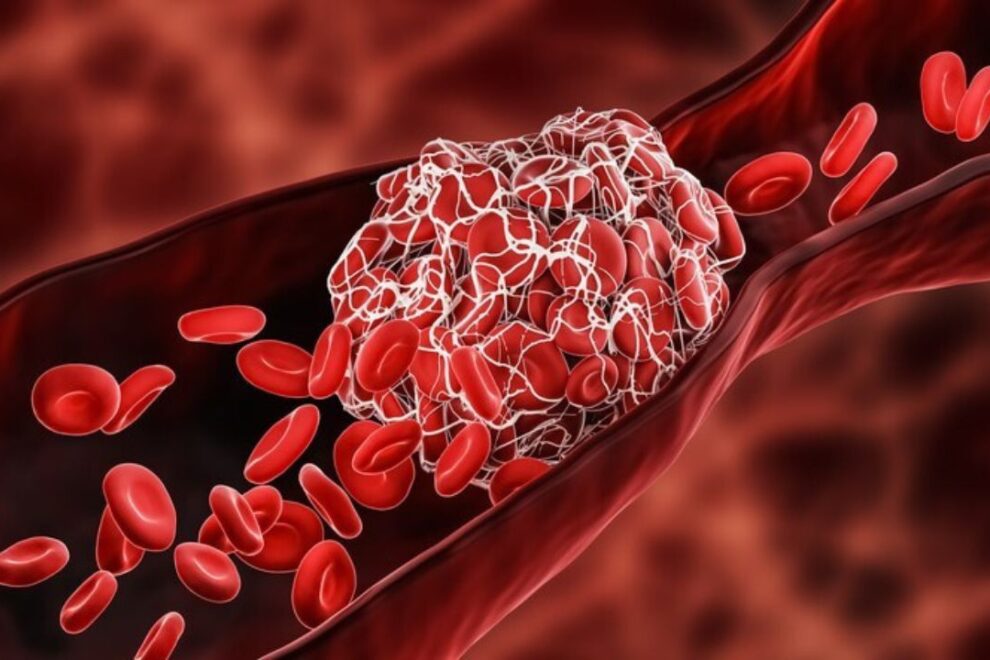Pulmonary Embolism Surgery and Cost in India
A pulmonary embolism (PE) is a blood clot in the lung. It usually comes from smaller vessels in the leg, pelvis, arms, or heart. When a clot forms in the legs or arms, it is referred to as a deep venous thrombosis (DVT).
The clot travels through the vessels of the lung continuing to reach smaller vessels until it becomes wedged in a vessel that is too small to allow it to continue farther. The clot gets wedged and prevents any further blood from traveling to that section of the lung.


Free Doctor Opinion
When no blood reaches a section of the lung, that portion of the lung suffers an infarct, meaning it dies because no blood or oxygen is reaching it. This is referred to as a pulmonary (or lung) infarct.
Pulmonary embolism is the sudden blocking of an artery of the lung (pulmonary artery) by a collection of solid material brought through the bloodstream (embolus)-usually a blood clot (thrombus) or rarely other foreign material.
- Pulmonary embolism is usually caused by a blood clot, although other substances can also form emboli and block an artery.
- Symptoms vary but usually include shortness of breath.
- Doctors often diagnose pulmonary embolism by looking for blockage of the pulmonary artery using a lung scan or CT angiogram.
- Blood thinners (anticoagulants) can be given to people at high risk to prevent pulmonary embolism.
- Anticoagulant drugs are used to keep emboli from enlarging while the body dissolves the clots; other measures (such as drugs to break up blood clots or surgery) may be needed for people who appear to be at risk of dying.
What are the causes and risk factors for pulmonary embolism?
Pulmonary embolus is the end result of a deep vein thrombosis or blood clot elsewhere in the body. Most commonly deep vein thrombosis’ are seen in the leg, but can also occur in veins within the abdominal cavity or in the arms.
The risk factors for a pulmonary embolism are the same as the risk factors for deep vein thrombosis. These are referred to as Virchow’s triad and include : –
- prolonged immobilization, alterations in normal blood flow (stasis)
- increased clotting potential of the blood (hypercoagulability)
- any damage to the walls of the veins.
Looking for a free cost estimate for Cosmetic Surgery in India abroad –click here
Or email at [email protected] / Call +91 9029304141
What are the signs and symptoms of pulmonary embolism?
A pulmonary embolus may present with the sudden onset of chest pain and shortness of breath. The pain is classically sharp and worsens when taking a deep breath, often called pleuritic pain or pleurisy. There may be cough that produces bloody sputum.
The patient may have stable vital signs (blood pressure, heart rate, respiratory rate, and oxygen saturation) but frequently presents with an elevated heart rate. A severe pulmonary embolus can present with shock (low blood pressure) or cardiac arrest, particularly when a large clot blocks the outflow of blood from the right side of the heart to the lungs (saddle embolus). Depending on the amount of blood clot (clot burden or clot load), oxygen saturation can be variably compromised as can the blood pressure and heart rate. In a classic presentation, the heart rate and respiratory rate are elevated as the body tries to compensate.
What is the problem and what is known about it so far?
A blood clot inside the deep veins of the legs is called deep venous thrombosis. If a piece of the clot breaks off and travels to the lungs, the clot in the lungs is called a pulmonary embolus. Clots in the deep veins of the legs and lungs can lead to tissue damage or even fatal complications.
Doctors use blood thinners to help dissolve clots and prevent repeated clots. For many years, they most often used a blood-thinning drug known as unfractionated heparin (UFH). Patients get UFH through a needle in a vein for a few days while they are in the hospital. The dose of UFH is monitored closely each day to check the amount of blood thinning that occurs. More recently, doctors have been using another preparation of heparin, low-molecular-weight heparin (LMWH). It is injected under the skin, can be given at home, and does not require close monitoring of the dose. Several studies show that LMWH is a safe and effective drug for treating blood clots in the legs. However, we know less about the relative benefits of LMWH versus UFH in the treatment of patients with clots in their lungs.
Do you have your medical reports; send us now for a free quote –click here
Or email at [email protected] / Call +91 9029304141
Read Also :-
- Stenting for GI Tract Surgery: A Minimally Invasive Solution in Digestive Health
- Surrogacy Agency in India: Professional Guidance for Your Parenthood Journey
- Sigmoidoscopy Surgery in India: Early Detection and Affordable Care for Colon Health
- Advanced Spondylosis Surgery in India: Procedures, Costs & Leading Hospitals
- Stenting for GI Tract Surgery: A Minimally Invasive Solution in Digestive Health
- Sigmoid Colectomy in India: Advanced and Affordable Colon Surgery
Committed To Build Positive, Safe, Patient Focused Care.
High Quality
Care
Home Review
Medicine
All Advanced
Equipment
Book An Appointment

At We Care India, we offer complete medical services for your entire family, from routine check-ups to injury care, ensuring personalized attention and expert assistance for all your health needs.


